
Forget reading a fairytale storybook. Step into one instead.
Here we reveal European streets so enchanting that to walk along one feels like being in a world of make-believe.
There's a chocolate-box avenue in French village that makes a cameo in the Bayeux Tapestry; a mews in Edinburgh lined with ivy and flowers; an English spot so charming it starred in a TV ad; a Spanish settlement that beguiles with a maze of Moorish alleys; and the world's smallest village in Croatia, which dates back to the 11th century and has just two streets.
The magic continues with an Italian town full of cuckoo-clock charm; a Czech Republic market square straight from the pages of a Hans Christian Andersen story; a Wisteria-covered Greek lane that feels like a dream and a German town that inspired the animators for Walt Disney classic Pinocchio.
1. Dinan, Brittany, northwest France
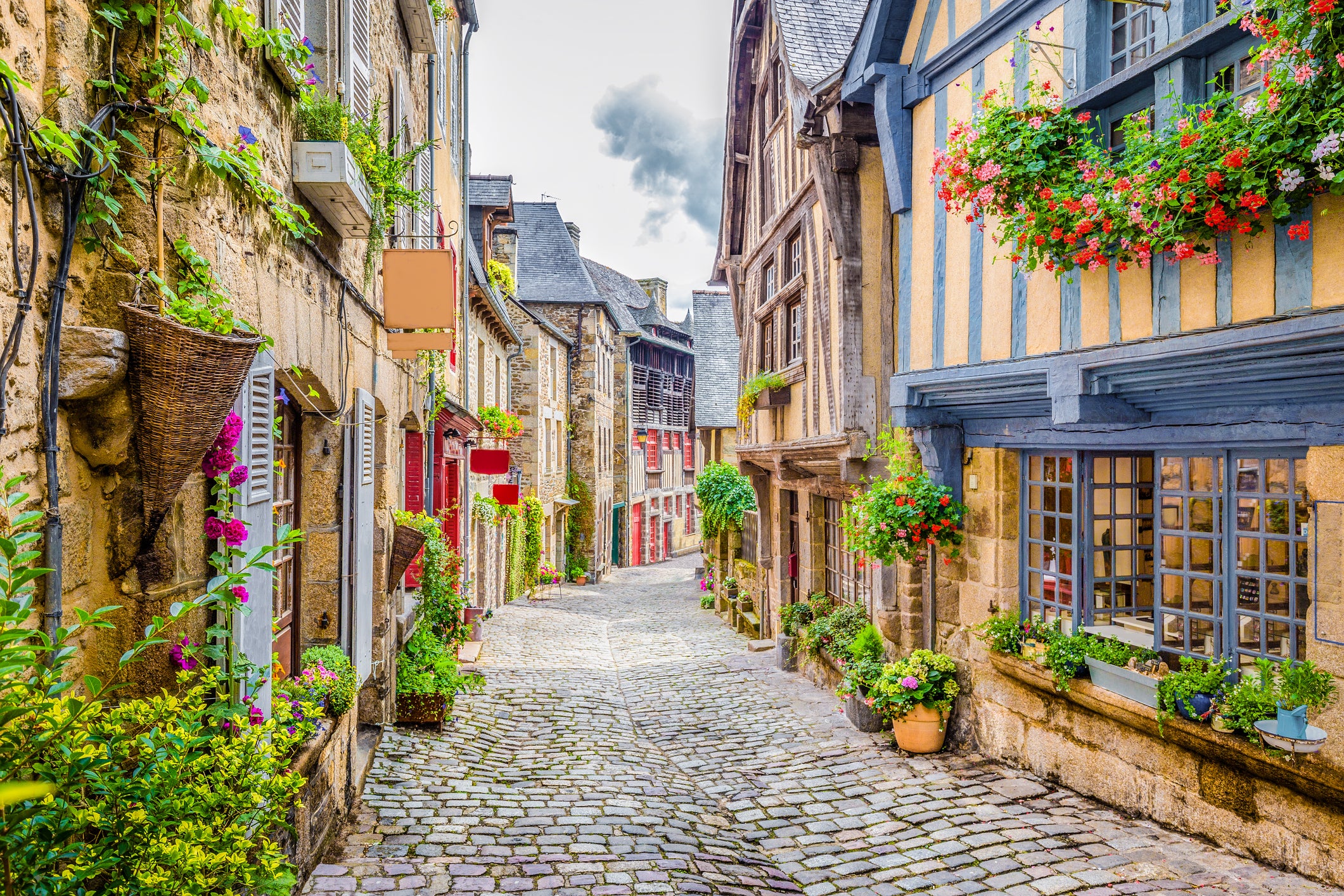
A jewel in Brittany's tourism crown, overlooking the Rance river, Dinan is like a medieval time-warp experience.
Visitors feel like they've stepped into the Middle Ages thanks to nearly two miles of ramparts and four monumental gateways, an 11th-century castle, half-timbered houses, a patchwork of cobbled streets, and glassblowers and gilders trading from boutique workshops.
For maximum enchantment, stroll along the chocolate-box Rue du Jerzual (pictured), which links the port to the town, then gaze upon the crooked houses in the heart of the settlement overhanging Place des Cordeliers and Place des Merciers, once bustling with weavers and tanners.
Then explore Dinan castle, which makes a cameo in the Bayeux Tapestry, before discovering 12th-century Saint-Sauveur basilica, a mesmerising blend of Gothic, Classical, Romanesque and even Persian influences. It's also the resting place of 14th-century knight Bertrand du Guesclin, who made a name for himself battling the English.
As evening falls, take a stroll from Dinan harbor along the banks of the Rance.
Where to stay
Thirty-five-room Hôtel du Château is located in the heart of Dinan’s historic quarter. Every room is en-suite with free wifi.
Read more: Luxury hotels with the best service: The world’s most impressive stays loved by billionaires
2. Circus Lane, Edinburgh

Even in a city brimming with architectural treasures, Circus Lane is a highlight.
This curved mews in Edinburgh's Stockbridge neighborhood, part of the Unesco-listed New Town, is lined with charming ivy-and-flower-clad houses and draws photographers from all over the country.
The cobbled street dates back to the late 18th century, with the buildings all former carriage houses, stables and servants’ quarters for the horses and staff of the wealthy residents of adjacent Royal Circus.
Filter or no filter, it's a lane that will light up your social media feed.
The surrounding streets, with their pristine neo-classical buildings, are well worth strolling along, too. You'll find stunning architecture around every corner.
To recharge, take your pick from any number of chic restaurants, hipster coffee shops, authentic pubs and cocktail bars nearby, with some of the best spots found down staircases and along side streets.
The more you explore, the more you'll be rewarded.
Where to stay
Keep the fairytale theme going with a stay in the grand Balmoral on Princes Street. This grand dame of a property has been impressing guests since 1902 with marble bathrooms, impressive restaurant food and Edinburgh Castle views.
Read more: 10 of the best under-the-radar beaches in the US for crowd-free coastal escapes
3. Eguisheim, Alsace, France
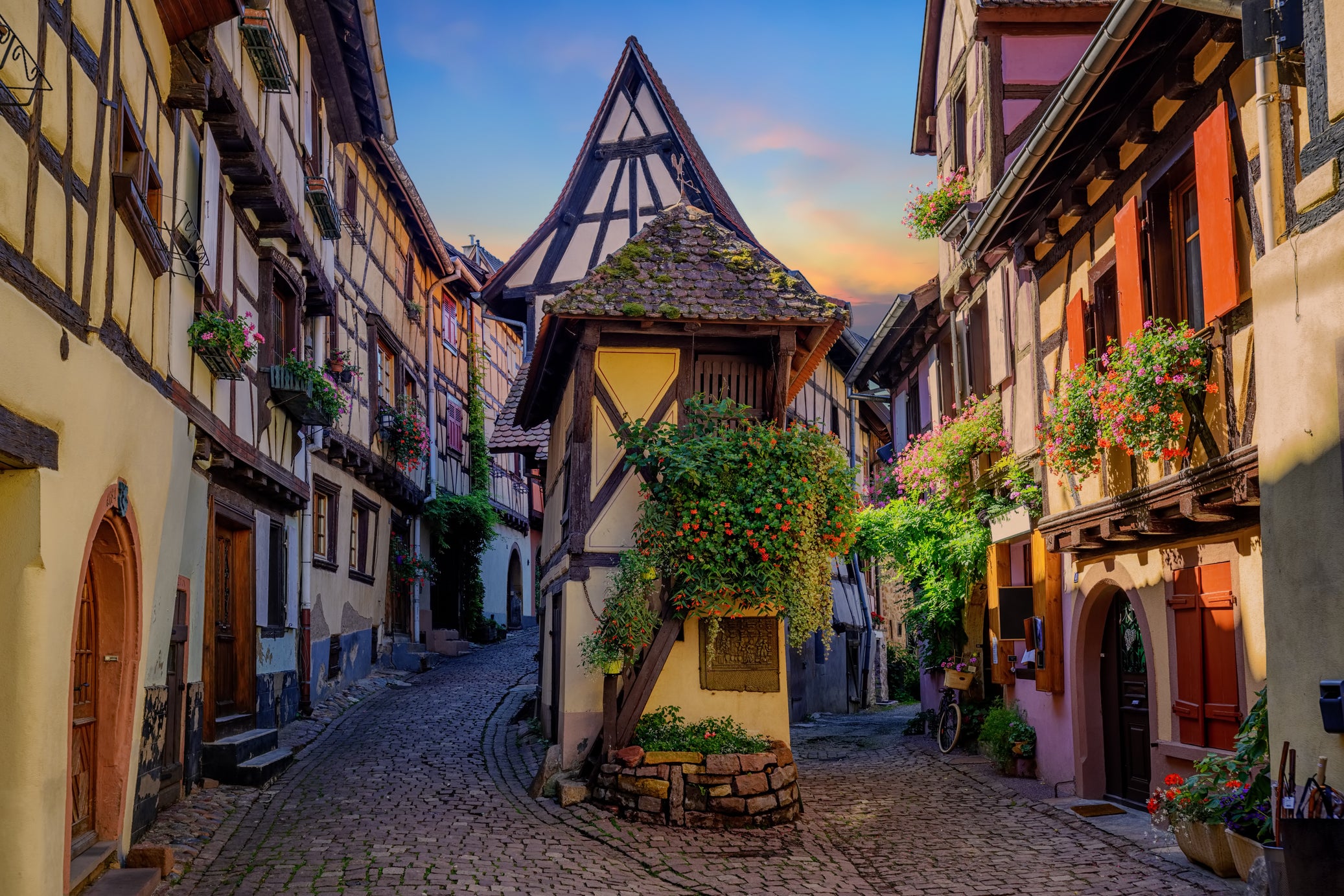
Eguisheim, in the Ballons des Vosges Regional Nature Park, is a village of achingly beautiful medieval buildings arranged in a concentric pattern.
You'll want to walk yourself dizzy along the cobbled main street, Rue du Rempart, where ginger-bready half-timbered houses with flower-filled balconies unfold like scenes in a pop-up story book.
This cute-as-a-button street is also home to revered mushroom shop La Boutique du Champignon — a must for mycophiles.
At the heart of the village are the remains of 13th-century Château Saint-Léon, named for Pope Leon IX, who was born here in 1002.
Although the chateau was largely destroyed by fire in the 19th century, neo-Roman Chapelle Saint-Léon was built where the keep once stood.
Book a tour to admire its stunning vaulted ceiling, which features seven scenes depicting the life of Pope Leon IX painted by the artist Martin.
After drinking in the village's fantasyland architecture, seek out a glass of the local wine. Eguisheim is, after all, in the heart of the Alsace wine-growing region.
Where to stay
Hotel Colmar Vignes Eguisheim is mere moments from the center of Eguisheim and offers rooms with TVs and private balconies.
Read more: Forget Disney: 24 real-life fairytale castles in the UK and Europe you can stay in
4. Gold Hill, Shaftesbury, Dorset, England
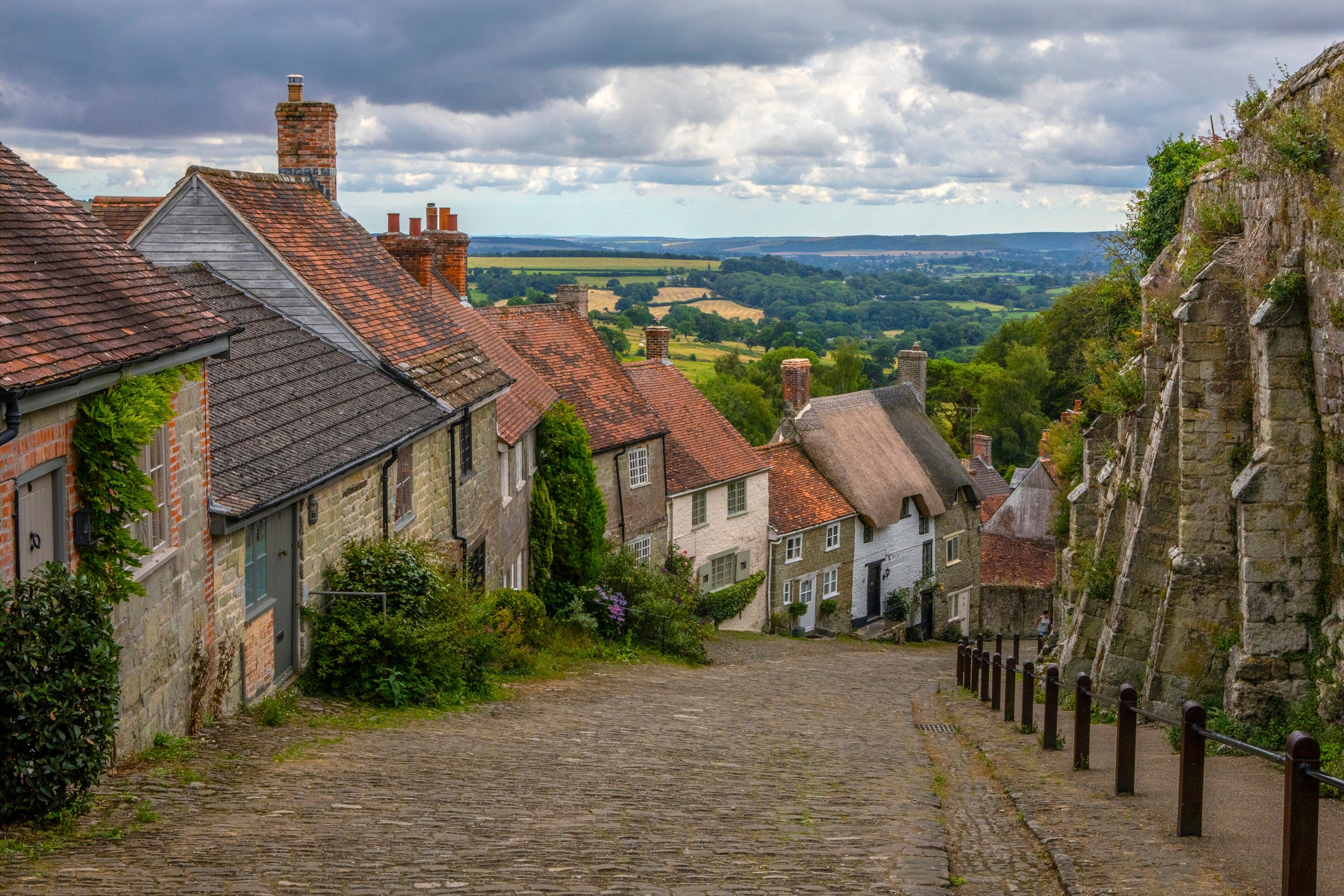
Turns out, that postcard-perfect England you've been dreaming of is real.
Welcome to Gold Hill in the village of Shaftesbury, a location so iconic that it featured in an advert for breadmaker Hovis in the 1970s that put it firmly on the map.
To the soothing murmurs of Dvorak's New World Symphony, the evocative commercial sees a boy push his bicycle up Gold Hill's ancient cobbles to deliver a loaf of bread before freewheeling back down to the baker's.
While the street for some serves merely as fodder for their Instagram feed, those with a yen for fascinating history will be interested to learn that the street runs beside the Grade I listed walls of Shaftesbury Abbey, built in 888 AD by the village's founder, King Alfred the Great.
At the top of the hill, meanwhile, stands St Peter's Church, built in the 14th century for pilgrims.
To learn more, visit the Gold Hill Museum, set in two historic buildings — a former priest's house and the former lodgings of Gold Hill traders.
There are eight galleries that tell the story of life in and around the village, and breathtaking views across verdant fields and woodland from the garden.
Where to stay
The Grosvenor Arms is loaf of bread's throw from Gold Hill, offering spacious rooms with coffee machines and a courtyard terrace.
Read more: Twenty-two incredible free things to do and see in New York City, from beaches to secret gardens
5. Frigiliana, Costa del Sol, Spain

Look beyond the brochures, and you'll discover there's more to the Costa del Sol than sizzling on busy beaches and cheap all-inclusive hotel stays.
The region is also peppered with magical villages, such as spellbinding Frigiliana, just five miles inland from the sands of Nerja.
Its maze of alleys criss-cross a Moorish haven sprinkled with blue and turquoise doors and window frames that adorn dazzling white-washed houses (don't forget your shades if the sun is out).
One of the most photogenic spots is the junction between the streets of C. Hernando el Darra and C. Real (pictured), while the best landscape view awaits at the highest point, the Castillo de Lízar. From here, you can enjoy a panorama over the village to the mountains of the Sierra Almijara and to the glistening Mediterranean.
And before you leave, be sure to try the local delicacies of fried spiced lamb and fennel stew at one of the many excellent restaurants.
Where to stay
Hotel la Posada Morisca, just outside Frigiliana, is a charming boutique hotel with an outdoor pool and a tranquil atmosphere.
Read more: Six of the most unique Airbnbs in the US revealed, from a missile launch site to a giant shoe
6. Hum, Istria, Croatia
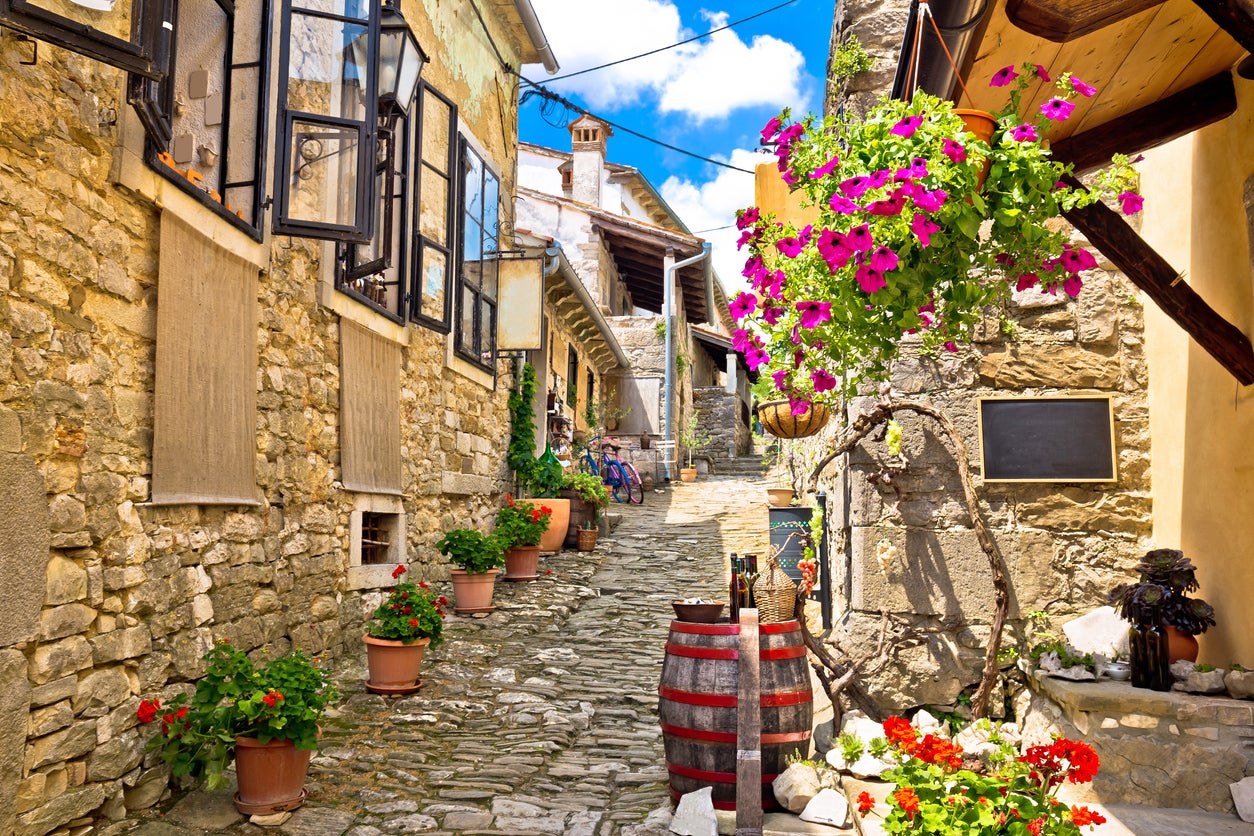
At just 30 feet in width and 100 feet in length, and with a population of around 30, Hum is often hailed as the world's smallest town. But it packs a picturesque punch for its size.
Encircled by ancient stone walls and occupying a hilltop in the verdant Istrian hinterland overlooking the Mirna River valley, the town looks like it's been parachuted in from a storybook and feels like a living museum.
It dates back to the 11th century, with visitors entering through a gatehouse renovated in the 16th century.
Inside, needless to say, all the sights are comfortably within walking distance.
There are dinky squares, houses draped in ivy and flowers and just two cobbled streets.
At the center is the Baroque Church of the Assumption of the Virgin Mary, which dates to 1802 and stands next to a climbable 70-foot-high bell tower built in 1552.
A museum housed inside a former granary reveals more about the remarkable town's history, while traditional Istrian mistletoe schnapps can be bought in the local shops and regional wine and Istrian cuisine, including Croatian fusi pasta, can be enjoyed at Humska Konoba, the town's only restaurant.
Where to stay
Jasmina Apartment is located within the walls of the town and offers two bedrooms, a fully equipped kitchen, a terrace, bar and free wifi.
7. Vipiteno, Italy
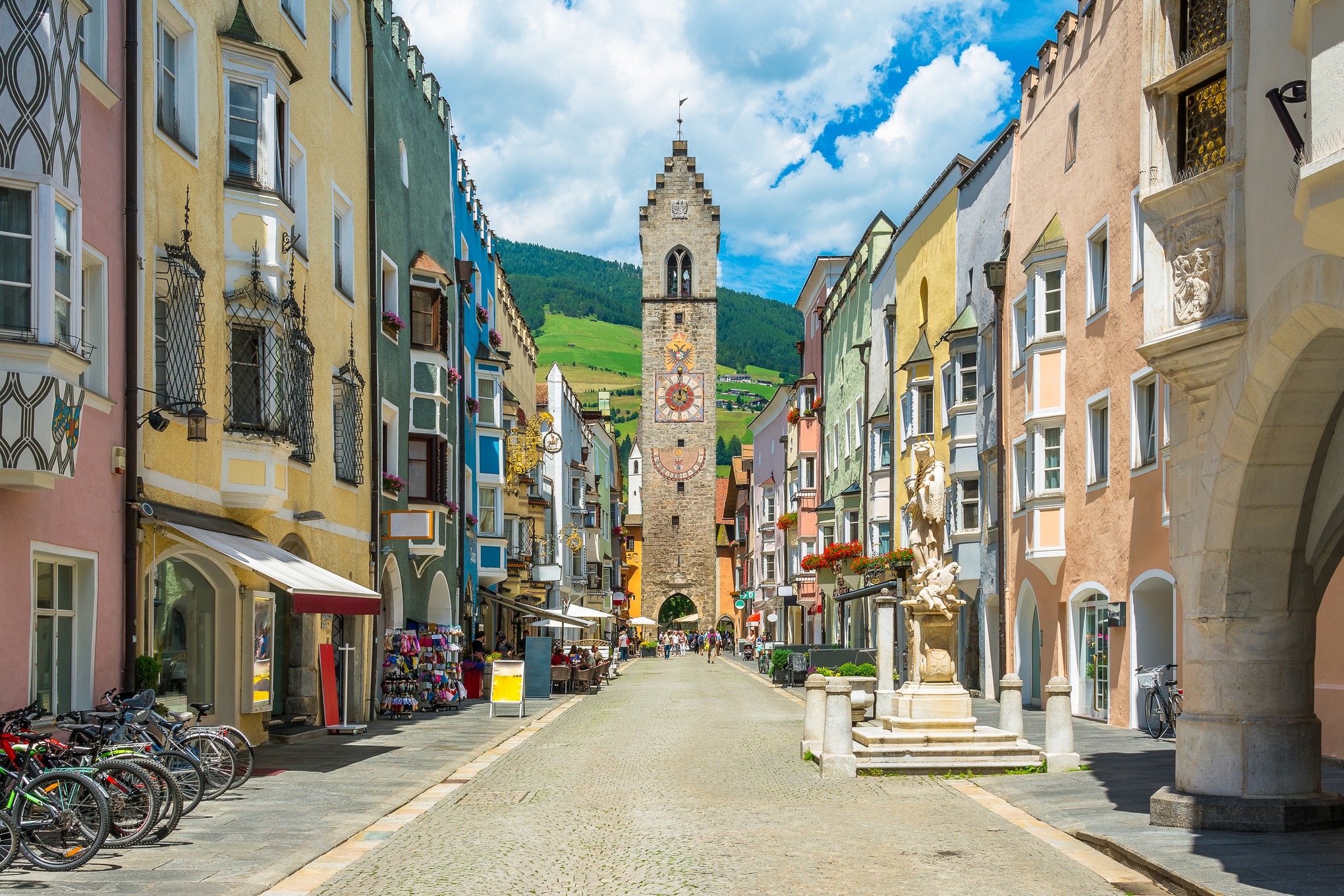
Variously described as a city, town and a village, one thing that's not up for debate about Vipiteno, six miles from the Austrian border in northern Italy, is the cuckoo-clock charm of its main street.
Ornate 15th-century buildings of various rainbow hues line this almost surreally pretty thoroughfare, which is crowned at the northern end, where an entrance gate once stood, by the ancient 150-foot-high Tower of the Twelve (so named as its midday chimes reminded local workers to take a break).
While this road is the showstopping attraction, the Gothic town hall is also a diverting calling point, along with the nearby Reifenstein Castle and the town's dual museums — Municipal Museum and the Multscher Museum, which occupy the same building, the Commandery of the Teutonic Order in Vipiteno. Exhibits include a 15th-century "winged altar" by Hans Multscher (1400–1467) and other artifacts that reveal the history of this beguiling spot.
Don't leave, though, without trying a slice of strudel and some Trentino speck, local pork that's been aged for 22 weeks by one of only 29 certified producers.
Where to stay
Haus am Turm, a former mountain courthouse in the historic center, dates back to the 14th century and offers 12 rooms and a panoramic terrace with views of the surrounding peaks.
8. Telc, Vysocina Region, Czech Republic
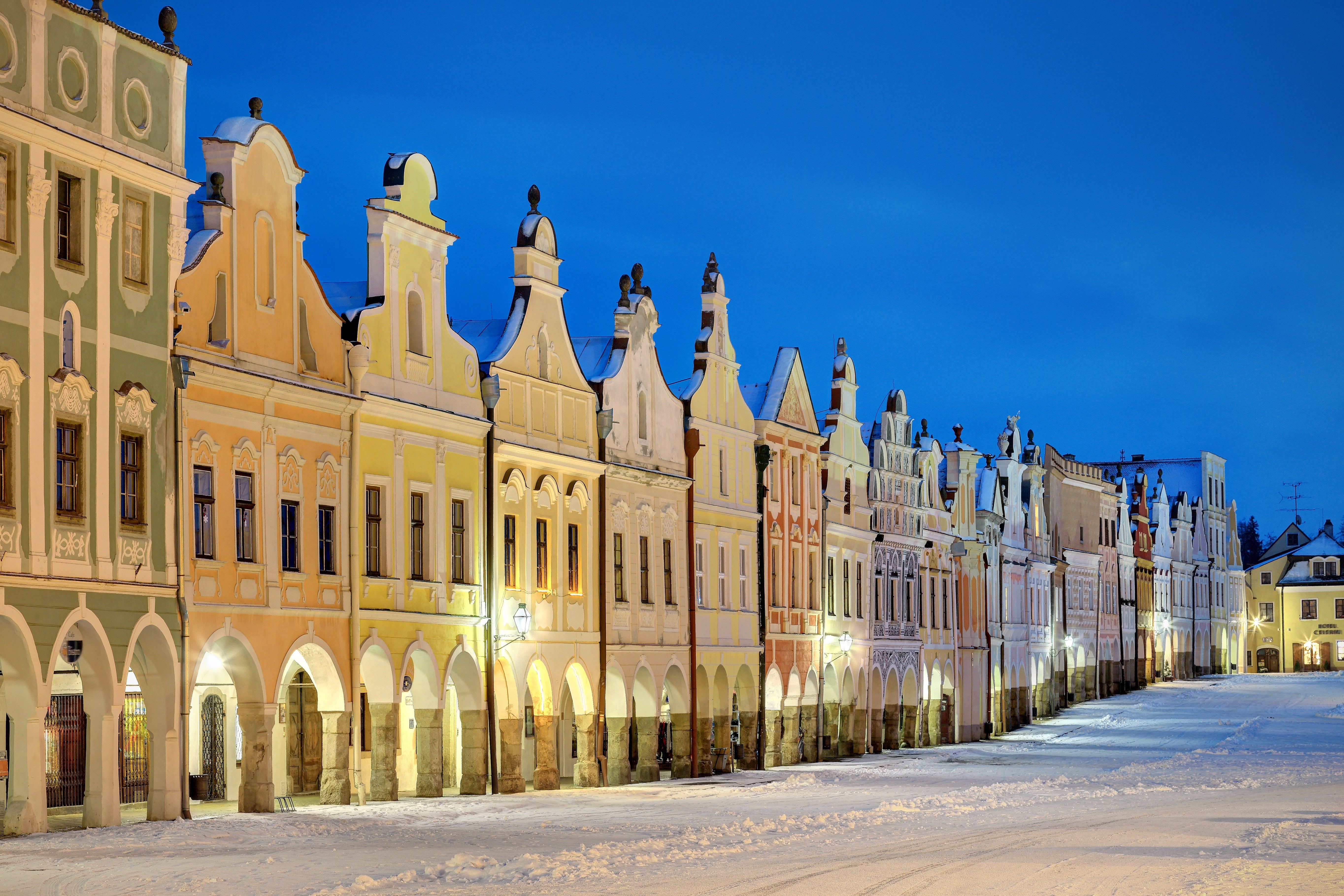
Behold the market square in Telc [Tel-sh], which has seemingly emerged from the pages of a Hans Christian Andersen story.
Around the edges of the transfixing triangular space are pastel-colored Renaissance and Baroque burgher houses with wonderfully ornate gables linked by an arcade full of shops and cafes.
There are few finer places in Europe to while away the time.
But visitors shouldn't linger too long, for this 14th-century Unesco World Heritage site, surrounded by three huge ponds, has further enticements.
In the middle is a stunning aristocratic chateau in the Italian Renaissance style featuring a magnificent hall with a coffered ceiling, elegant rooms and a beautifully manicured garden.
Next to this stands the imposing Church of St Jacob, which dates back to the 14th century. Climb the tower for sensational panoramic views, then, for a dramatic contrast, descend into the town's underground passages and explore their interactive exhibits.
Where to stay
Hotel U Hrabenky, housed in a 1700s building and arranged around a central courtyard, is located a few minutes' walk from the historic center of Telc. Wooden beams abound in the 18 bedrooms, with one featuring a corner hot tub.
Read more: I saw the best of unspoilt France on a €1 train ticket
9. Molyvos, Lesvos, Greece
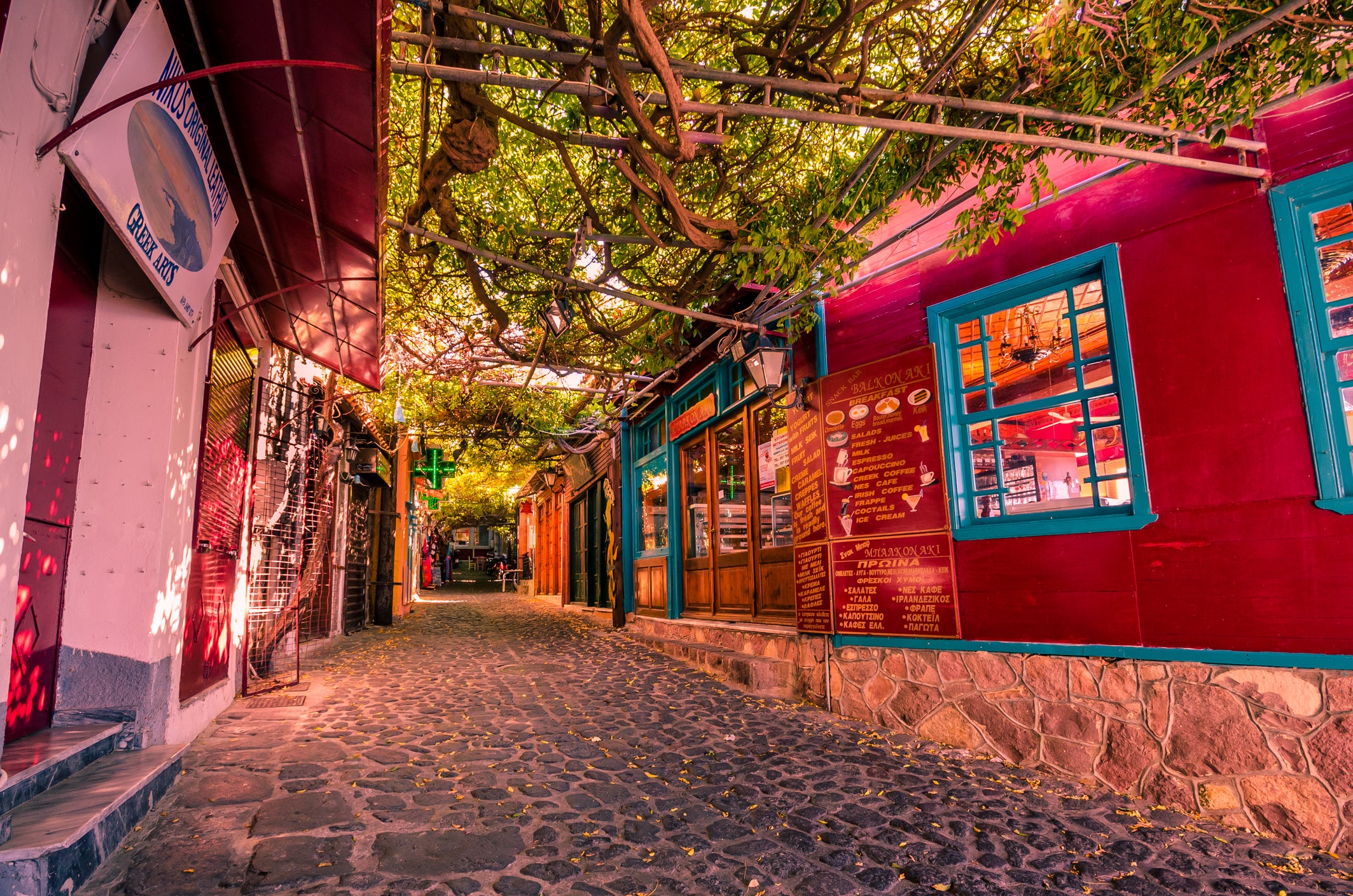
Walking up this cobbled street in Molyvos on the Greek island of Lesvos feels like a dream.
The beginning of the lane, just up from Congas Beach Bar at the harbor's edge, is marked by a yellow postbox and a sign that reads 'Traditional Market'.
Stroll past and you'll enter what feels like a secret world, with the alley, shaded by a bewitching canopy of wisteria, winding between quaint tavernas, cafes, art galleries and bakeries on both sides.
Waiting at the top is 13th-century Molyvos Castle and breathtaking 360-degree views of the Aegean Sea and the nearby Turkish mainland.
Other delights of Molyvos (also known by its ancient Greek name, Mythimna) include snorkeling in clear blue waters, riding the cute 'land train', discovering the Ottoman Baths of Mithymna museum and watching fishing boats unloading their catches from a taverna table in the harbor.
Where to stay
Hermes Hotel has 10 comfy rooms and is in a prime position seconds away from both the beach and the wisteria-covered fairytale lane.
Read more: My Greek island small ship cruise odyssey under sail
10. Rothenburg ob der Tauber, Germany

The historic town of Rothenburg ob der Tauber is where Germany reaches peak fairytale.
The heart of the enchantment is a landmark area along street Untere Schmiedgasse known as the Plönlein — "small place by the fountain" — comprising a crooked yellow house with a small fountain in front of it and two 14th-century towers of the old city wall positioned behind.
The Plönlein was deemed the archetypal storybook scene by Walt Disney animators, who drew inspiration from it for the look of classic cartoon Pinocchio, while 2001 anime series A Little Snow Fairy Sugar takes place in a fictional olde worlde town modeled after Rothenburg ob der Tauber.
For a sweeping view of the Bavarian medieval architecture, climb the 220 steps to the top of the town hall's 200-foot-tall tower, then explore the alleyways and squares to find a cafe or restaurant to refuel in. Specialities include malty Lenten beer (described as "liquid bread" by the German monks who invented it), local Tauber wines and the famous Rothenburg "snowballs", which are irresistible balls of pastry dusted in powdered sugar.
Where to stay
Romantik Hotel Markusturm dates back to 1264 and occupies St. Mark's Tower in the medieval quarter of Rothenburg ob der Tauber. Many of the rooms are furnished with antiques, and guests can dine in a flower-filled courtyard terrace during warmer weather.
Read more: We swapped Disneyland for this German theme park – it could be Europe’s best
The overlooked towns within two hours’ drive from Europe’s biggest cities
6 best Croatia cruises for island-hopping excursions to ancient cities
Best kids club resorts in Europe 2025: Where to stay for family-friendly fun
Interrail sale: All the best European train route itineraries according to an expert
How Spain’s tomato-throwing festival helped cure my heartbreak
I cruised around 8 Greek islands this summer – this uninhabited one was my favourite







